Shopping and lunching in Barnard Castle
A visit to the delightful County Durham market town of Barnard Castle always lifts the spirits, even if the weather when I was last there in March was truly miserable.
For a town with a population of just over 5,000, Barnard Castle has a surprisingly strong retail offer – the consequence, no doubt, of it being the main settlement in Teesdale, and of the next nearest towns (Darlington, Richmond, Bishop Auckland) all being about 15 miles away.
Traditional buildings lining the main thoroughfares of Galgate, Horse Market and Market Place house many of the shops. There’s a decent Morrisons supermarket – formerly a Safeway – off Galgate, next to the town’s main car park, and plenty of other national names such as Holland & Barrett, M&Co, Boots and The Co-operative Food.
Northern variety store chain Boyes has a three-storey shop in Horse Market that is truly an Aladdin’s cave. With a wide and ecletic product range – toys, clothes and gardening sit alongside fishing, bedding and kitchenwares – Boyes in Barnard Castle manages to perform the role that many small town Woolworths used to, providing an outlet for items that cannot be found anywhere else locally. Little wonder that the shop always seems busy, despite the rather tired interior.
On the topic of Woolworths, the rather dinky former Woolies in Barnard Castle was snapped up fairly quickly, and is now a Heron Foods. Indeed, when I visited, the town as a whole seemed to have a relatively small proportion of empty shops, though there was evidence of some longstanding independents having recently closed, as well as two prominent gaps – The Local in Galgate, and Victoria Wine in Horse Market – as a result of the demise of off licence retailer First Quench. Promisingly, however, the local regeneration group, Barnard Castle Vision, appears to have been very successful recently in encouraging new shops to open up in the town’s empty units.
Another national name in Barnard Castle is the Edinburgh Woollen Mill, whose store caught my attention for the wrong reasons. When I was younger, I remember accompanying my mother into Edinburgh Woollen Mill shops on occasions, and always thought of it as a traditional, good quality brand. On my recent travels, however, I’ve noticed that the retailer’s shop frontages seem to be consistently – and garishly – shouting about discounts, rather than emphasising the quality or provenance of its garments. Just as the present rebranding of stores to the meaningless ‘EWM’ fascia seems counter intuitive, I do wonder too about the wisdom of Edinburgh Woollen Mill’s apparent preoccupation with discounting.
One of the best things about Barnard Castle is the good balance between these national names and an excellent range of interesting independent stores, including many antiques shops. Lots of the independents are clustered around The Bank, down the hill from the Market Cross, and these help to ensure that Barnard Castle retains a distinctive character.
Perhaps Barnard Castle’s greatest strength, however, is the way that it manages to combine its good quality retail offer with a very good range of other local services, including banks, pubs, cafes, and reasonably priced car parking.
At a time of economic difficulties, and where many other small towns are struggling, it is Barnard Castle’s holistic offer – together with its sheer appeal as a place – that gives the town the best possible chance of attracting and retaining visitors.





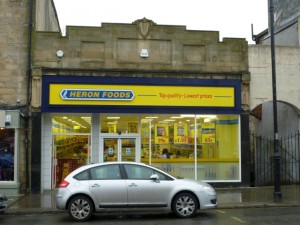

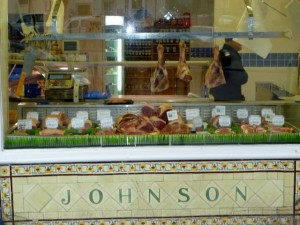
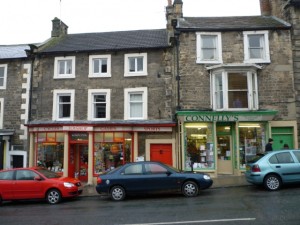
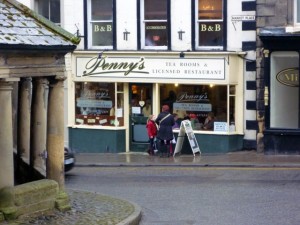

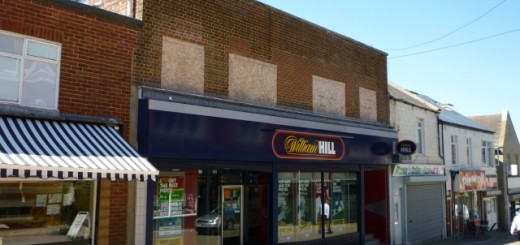
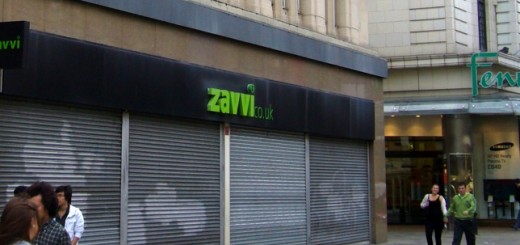






5 Responses
[…] posts about completely different topics – the one from a couple of weeks ago about my visit to Barnard Castle, and February’s post about the now-famous Shopjacket in Whitley […]
[…] Graham’s post about his visit to Barnard Castle, I was struck by his observations of the discounting approach that’s been taken by the […]
[…] in a slightly more orderly fashion than some of the other Boyes I’ve been to, such as Barnard Castle or Scarborough. Still, the TK Maxx-style rummage sale feel is surely an integral part of […]
[…] As far as I’m aware, only the county’s two largest towns ever had a Woolies store. Hawick (store #413), opened at 46 High Street in about 1930, followed by Galashiels (store #486) on 22 October 1932; both lasted until the chain’s eventual collapse in 2008. In contrast, settlements such as Selkirk, Kelso and Peebles seem to have missed out, even though Woolworths did, at various times, have stores in similar-sized small towns elsewhere (such as Launceston and Barnard Castle). […]
[…] know in the past I’ve mocked Edinburgh Woollen Mill’s eponymous chain for its garish window posters and seemingly perennial Sales. Credit where it’s due to EWM […]